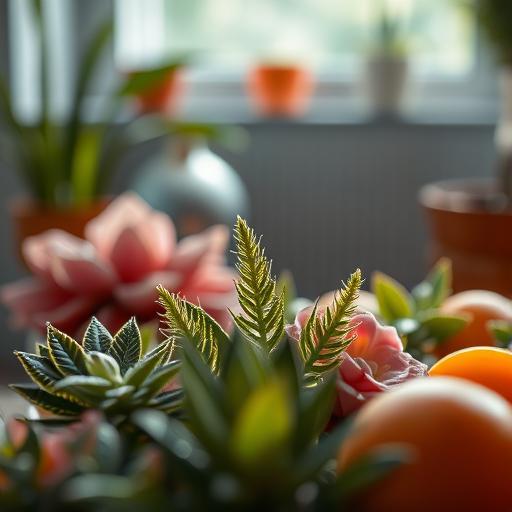What’s the Big Deal About a Cohesive Instagram Feed?
First impressions are everything, especially on a visual platform like Instagram. A cohesive feed acts as your digital welcome mat, instantly communicating your brand’s personality and style. When a potential follower lands on your profile, a consistent and beautiful grid shows them you’re serious about your content and have a clear point of view. It’s the difference between a random collection of photos and a curated, professional-looking portfolio, and it’s a huge factor in whether that person hits the “Follow” button. If you want to build a memorable brand, you need to buy lightroom presets that align with your vision.
Beyond that initial appeal, a unified aesthetic builds brand recognition and trust. Your followers will begin to recognize your photos in their feed even before they see your name. This consistency makes your content feel reliable and familiar, fostering a stronger connection with your audience. Think of your favorite brands; they all have a distinct visual language. An organized Instagram feed does the same job for you, creating a signature look that is uniquely yours and keeps people coming back for more.
Understanding Lightroom Presets: Your Editing Shortcut
So, what exactly are these magical tools? A Lightroom preset is simply a pre-saved configuration of photo editing settings. Imagine you’ve perfected the brightness, contrast, shadows, and color tones on a photo to create a beautiful, warm, and golden look. A preset saves all those adjustments so you can apply them to any other photo with just a single click. It’s a massive time-saver and the number one secret for maintaining consistency across all your images.
These are far superior to the standard filters found within the Instagram app. While those filters can be fun, they are often harsh and offer very little room for customization. Presets, on the other hand, are created by professional photographers and editors. They provide a sophisticated and nuanced starting point for your edits, giving you the power to create a truly professional and unique appearance that sets your content apart from the crowd.
Finding Your Signature Style
Before you even think about purchasing a preset pack, you need to have a clear vision for your feed’s aesthetic. Take a moment to think about the feeling you want your brand to evoke. Are you aiming for a light, bright, and airy vibe? Or perhaps something more dark, moody, and cinematic? Other popular styles include warm and earthy, cool and minimalist, or vibrant and tropical. Pinpointing your desired mood is the foundational step to building a feed you love.
A fantastic way to clarify your vision is to create a secret mood board on Pinterest. Search for terms that match your desired feeling, like “beachy photography,” “cozy fall aesthetic,” or “clean minimalist interior.” Pin at least 15-20 images that you are drawn to. Then, review your board and look for common themes. What colors appear most often? Is the lighting soft or harsh? This visual guide will be invaluable when you start looking for the perfect preset pack that matches your style.
How to Choose the Perfect Preset Pack
Once you know the look you’re going for, it’s time to find the right tools for the job. Not all preset packs will work for you, so it’s important to choose wisely. Look for collections that offer several variations of a single theme. A good pack will often include presets designed for different lighting conditions—for example, one for direct sunlight, one for indoor shots, and one for overcast days. This variety gives you the flexibility to maintain your aesthetic no matter where you’re shooting.
Always review the before-and-after examples provided by the seller. The best preset creators will show their edits on a wide array of photos, including different skin tones, locations, and lighting scenarios. This transparency shows you how versatile the presets are and helps you imagine how they will look on your own photos. Avoid any sellers who only show their presets on a handful of very similar images, as this could mean they don’t work well under other conditions.
Installing and Using Presets on Mobile and Desktop
Getting your new presets set up is usually a very simple process. For mobile users, you’ll be working with the free Adobe Lightroom app. The process typically involves downloading special DNG image files to your phone. You’ll open these DNG files in the Lightroom app, copy the settings from each one, and then save those settings as a new, named preset right inside the app. Most sellers provide easy-to-follow PDF or video guides to walk you through it.
For bloggers and photographers who edit on a computer, the desktop process is even more direct. Presets for desktop versions of Lightroom usually come as XMP files. Within the Lightroom program, you just need to go to the presets panel and import the file folder. From that point on, your new presets will be available in your library, ready to be applied to your photos with a click. It’s an efficient workflow that can seriously speed up your editing time.
Making Minor Adjustments for a Flawless Finish
It’s important to remember that a preset is a fantastic starting point, but it’s not always a one-click perfect fix. Because every single photo has unique lighting and colors, you’ll almost always need to make a few small tweaks. A photo taken on a cloudy day will need different adjustments than one taken in bright sun, even with the same preset. Don’t be discouraged if it doesn’t look perfect instantly.
Getting comfortable with a few basic sliders in Lightroom will make all the difference. After applying your preset, the two most common adjustments you’ll make are to ‘Exposure’ (to make the photo brighter or darker) and ‘White Balance’ or ‘Temp’ (to make it warmer or cooler). A small slide of one of these dials is often all it takes to make the photo fit perfectly with the rest of your feed. This little bit of fine-tuning is what separates good feeds from great ones.
Planning Your Grid for Visual Harmony
A stunning feed is about more than just consistent colors; it’s also about the overall composition and flow of your grid. This means thinking about how your photos look next to each other. A great practice is to alternate between different types of shots to create visual interest. For instance, you could post a close-up detail shot, followed by a wide-angle scenic picture, followed by a photo of a person. This prevents your grid from looking too busy or repetitive.
To master this, it’s a great idea to use a grid planning application. Apps like Planoly, Later, or Preview are excellent for this purpose. They connect to your Instagram account and let you upload and arrange future posts in a visual planner. You can drag and drop images to see exactly how a new photo will look in your feed before you hit publish. This removes all the guesswork and ensures every new post contributes positively to your beautiful, cohesive aesthetic.




